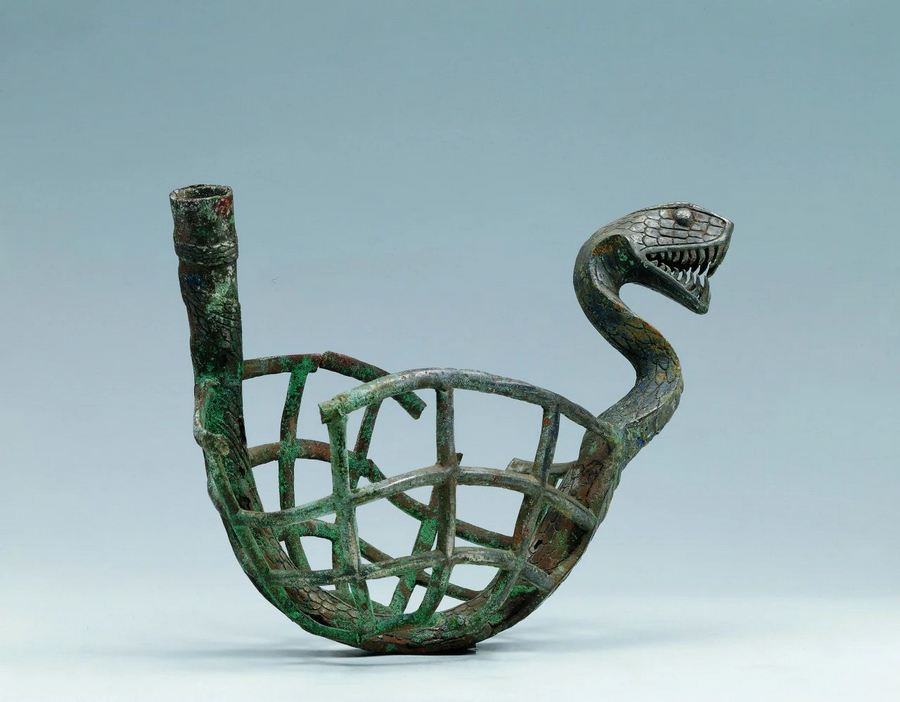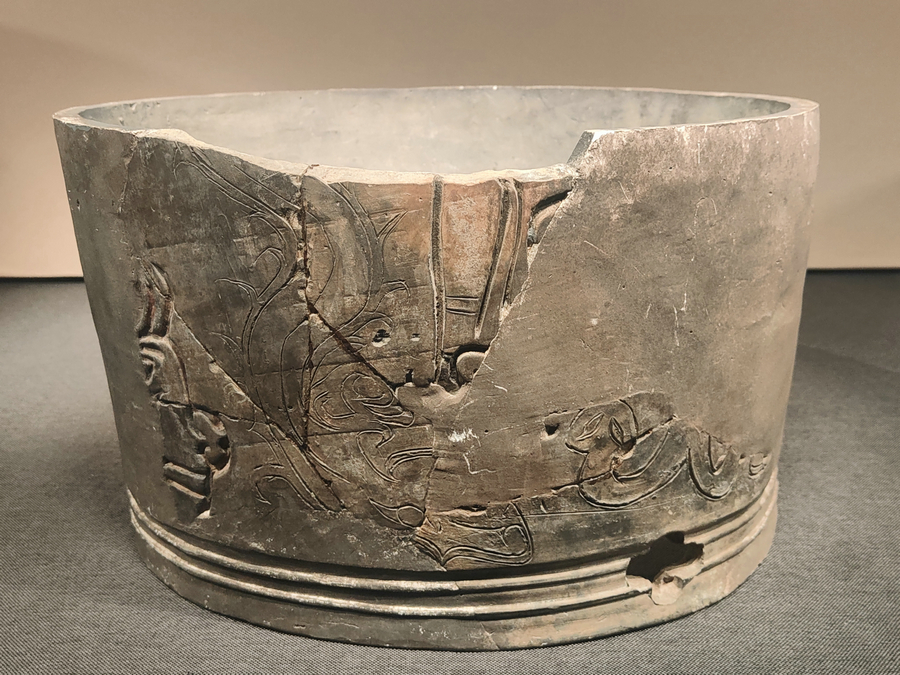RESOURCES
Updated: 2025-01-23 10:59( China Daily )

Bronze web-like artifact in the form of a snake from the ancient Dian kingdom of
the Warring States Period (475-221 BC). [Photo provided to China Daily]
In Chinese culture, the snake seems to have an intricate relationship with the dragon, a symbolic emblem of the nation. Sometimes they could not be differentiated from each other, in other times snakes were widely believed to be a major prototype of dragons. Similar to the dragon, the snake was an important motif throughout the Chinese history, but different from dragons, snakes had fluctuating symbolic meanings.
Snakes were not unfamiliar to ancient Chinese people. In Shuowen Jiezi ("an explanation of Chinese characters"), a basic reference book on Chinese characters written in the second century, author Xu Shen mentioned how people feared snakes and greeted each other by asking if they had encountered any recently, indicating the frequent presence of such creatures in their lives.

Vessel with snake or dragon motifs from the Erlitou Site in Luoyang, Henan province, from 3,800 to 3,500 years ago. [Photo by Wang Tu/China Daily]
As a matter of fact, the ancient Chinese had detailed observations of snakes, gaining profound insights into their biological characteristics. This led to the gradual development of diverse and complicated sentiments toward these creatures, as evidenced by the numerous cultural artifacts and myths they left behind.
The earliest known cultural relics related to snakes can be traced back to nearly 8,000 years ago in northeastern China, where Chahai Site in Fuxin, Liaoning province, has unveiled a cylindrical pottery jar embossed with the pattern of a snake biting a frog.
"The pattern probably came from people's observation of the biological features of the animal, without a religious symbolism," says Han Ding, an associate professor of archaeology at Henan University. He adds that snake patterns continued to exist during the Neolithic period, from this vessel to the Yangshao Culture in the middle reaches of the Yellow River dating back 5,000 to 7,000 years and then to Liangzhu Culture in the lower reaches of the Yangtze River from 5,300 to 4,000 years ago. These snake images occasionally adorned ritual vessels, possibly reflecting concepts related to beliefs, but their sacredness fell far short of the later motifs.